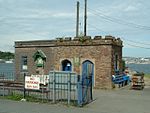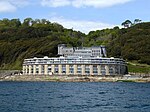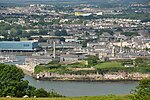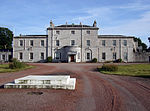Mount Edgcumbe House
Country houses in CornwallGardens in CornwallGrade II listed buildings in CornwallGrade I listed garden and park buildingsHistoric house museums in Cornwall ... and 2 more
Museums in CornwallUse British English from February 2023

Mount Edgcumbe House is a stately home in south-east Cornwall and is a Grade II listed building, whilst its gardens and parkland are listed as Grade I in the Register of Parks and Gardens of Special Historic Interest in England.Mount Edgcumbe Country Park is situated in the parish of Maker on the Rame Peninsula, overlooking Plymouth Sound; its main entrance is in the village of Cremyll. It was the principal seat of the Edgcumbe family since Tudor times, many of whom served as MP before Richard Edgcumbe was raised to the peerage as Baron Edgcumbe in 1742. His 2nd son, George, was advanced to the rank of Earl in 1789.
Excerpt from the Wikipedia article Mount Edgcumbe House (License: CC BY-SA 3.0, Authors, Images).Mount Edgcumbe House
B3247,
Geographical coordinates (GPS) Address Website External links Nearby Places Show on map
Geographical coordinates (GPS)
| Latitude | Longitude |
|---|---|
| N 50.3543 ° | E -4.17596 ° |
Address
Mount Edgcumbe House
B3247 Cremyll
PL10 1HZ , Maker-with-Rame
England, United Kingdom
Open on Google Maps










